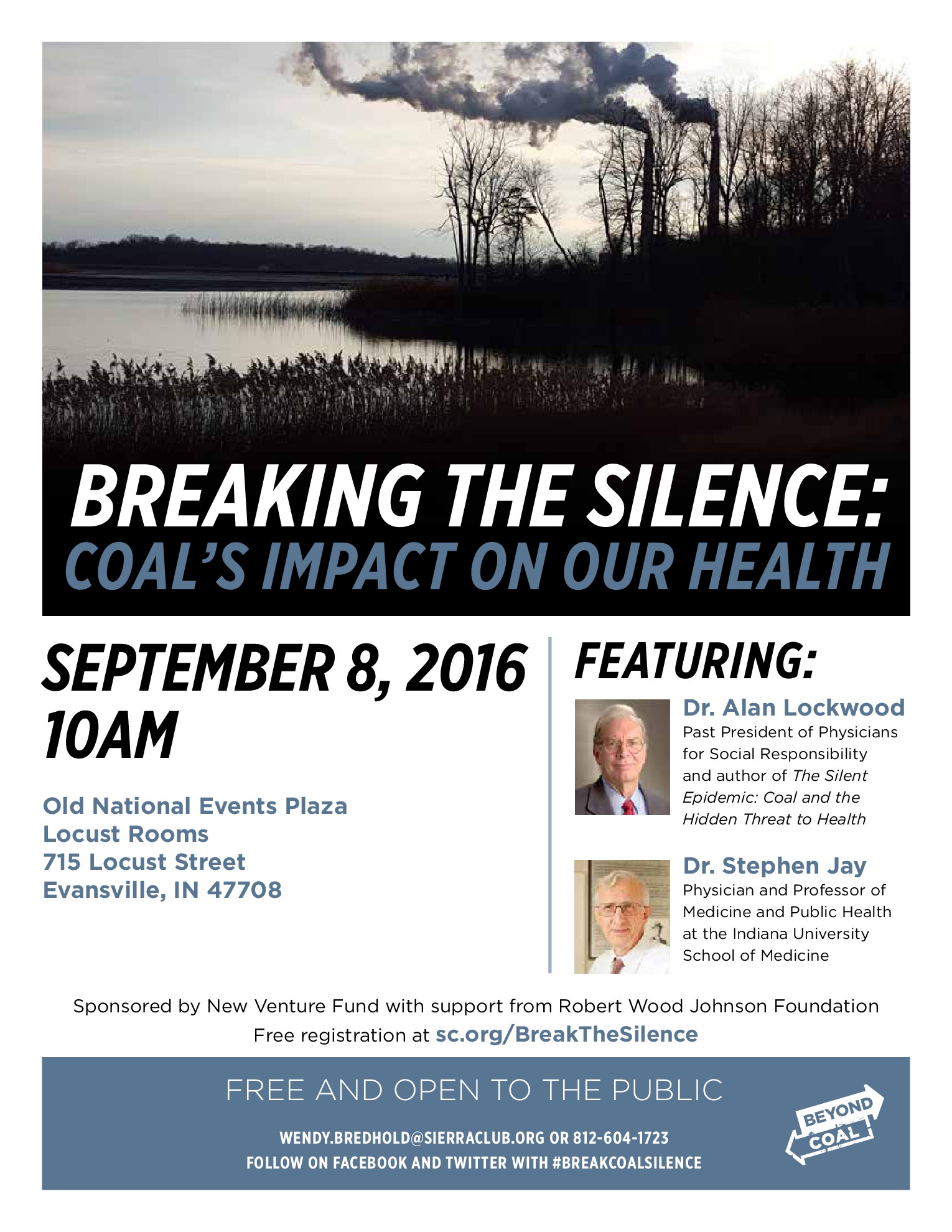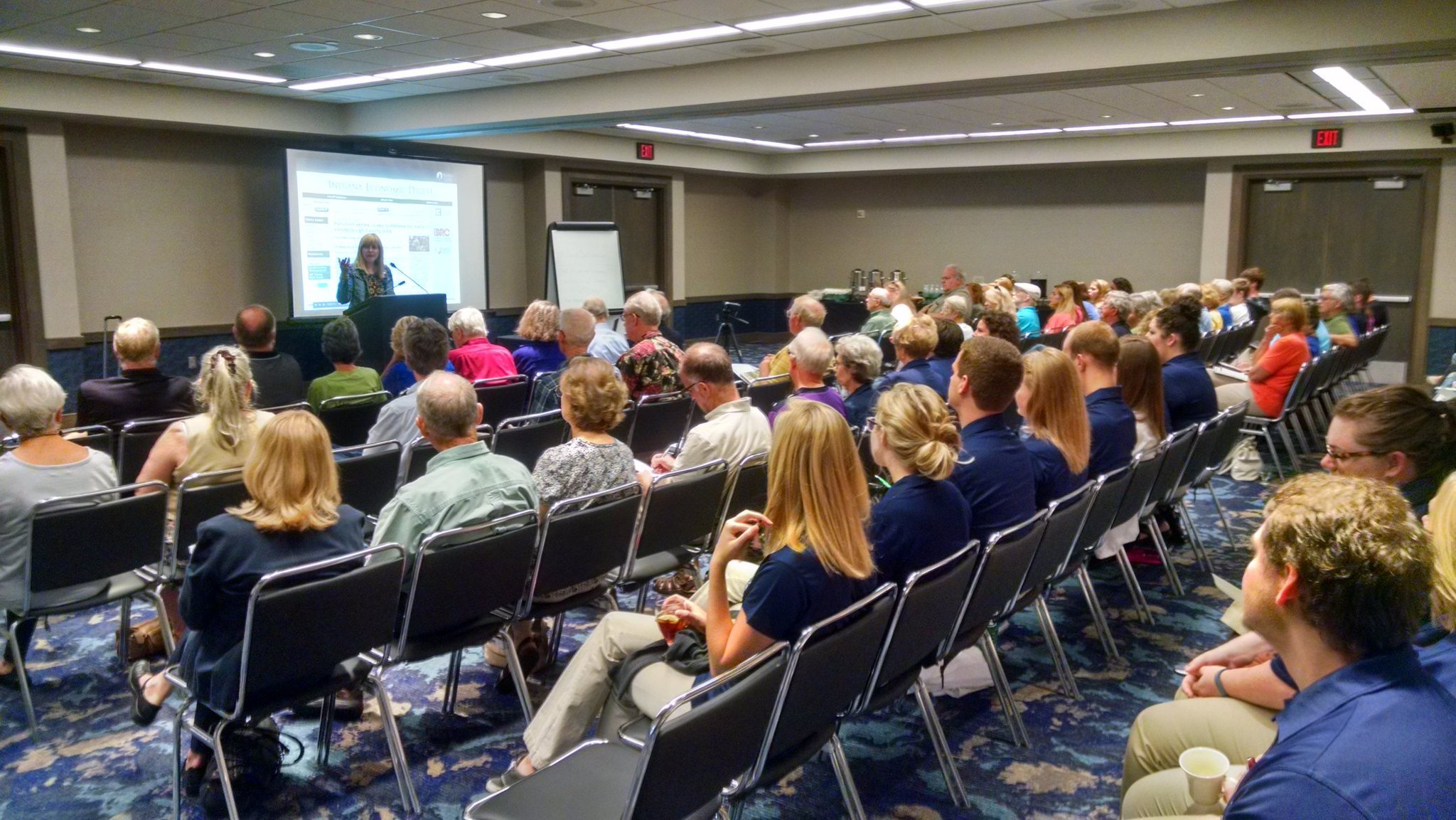Wendy Bredhold says despite serious public health threats posed by high levels of coal pollution in the Ohio River Valley (which includes parts of Indiana, Kentucky, and Ohio), not many have paid attention.
“This region has one of the highest concentrations of coal-burning power plants in the country, including some of the dirtiest, and more than half of the power generated is exported,” said Wendy, a Beyond Coal representative who lives in the area. Two of these plants, Duke’s Gibson station and AEP’s Rockport plant, are among the biggest and dirtiest in the country. “We’re left with the pollution.”
For many residents, they either hadn’t connected the dots between nearby coal-fired power plants and health problems like asthma, or they just weren’t that aware their area was home to such a high concentration of power plants. Months of work to raise awareness culminated in a public forum entitled “Breaking the Silence: Coal’s Impact on Our Health” earlier this month in Evansville where a full house of more than 100 people gathered to learn from experts, ask questions, and share their stories.
 “We brought in public health experts to begin to understand how these plants are impacting our health and from there, how we can protect our communities as we transition away from coal to clean energy,” Wendy said. And she made sure everyone had the opportunity to learn from them - check out this great clip of Wendy taking to the airwaves on a local morning news show to spread the word.
“We brought in public health experts to begin to understand how these plants are impacting our health and from there, how we can protect our communities as we transition away from coal to clean energy,” Wendy said. And she made sure everyone had the opportunity to learn from them - check out this great clip of Wendy taking to the airwaves on a local morning news show to spread the word.
The forum’s featured speakers were Dr. Alan Lockwood, a neurologist and past president of Physicians for Social Responsibility and author of The Silent Epidemic: Coal and the Hidden Threat to Health, and Dr. Stephen Jay, emeritus professor of medicine and public health and past founding chair of the Indiana University Richard M. Fairbanks School of Public Health, who researches climate change and air pollution. The forum was sponsored by the New Venture Fund with support from the Robert Wood Johnson Foundation.
Exposure to air pollution from coal plants is linked to heart disease, cancer, respiratory illness, stroke and, studies suggest, mental illness, reduced intelligence and Alzheimer’s disease. Mercury from coal plants makes its way from water sources up the food chain and damages the developing brains of fetuses. Dr. Jay said that air pollution from coal plants is responsible for up to 200,000 premature deaths per year and $50 billion in annual healthcare costs.
In the leadup to the forum, Wendy and her team launched a series of powerful #BreakCoalSilence videos featuring local residents telling their stories of health problems linked to coal pollution. They included the mom of a child with asthma, a parent who lives near a power plant and is worried about her family’s exposure to pollution, and a young woman who struggles to breathe. You can see all the videos here.
Given the health problems in the community, Wendy was especially excited that a class of respiratory therapy students and faculty from the University of Southern Indiana and a class of high school students from Boonville High School in Warrick County came to the forum.
“As John Blair, the president of Valley Watch has said, ‘You have to acknowledge the problem before you can do anything about it,’” said Wendy. “Public officials, educators and the healthcare community should all be involved in that effort.”
Dr. Lockwood was also able to talk to as many people again at two local universities the next day.
Wendy said they’re just beginning the process of following-up with forum attendees, but she is very encouraged. “The turnout and response to the forum shows a level of concern in the community that is not matched by the historical lack of engagement and response from community leaders on this issue,” she said.
Local Beyond Coal leaders and coalition partners will also continue their dialogue with workforce development and labor leaders on how a transition that is fair and just for workers can be ensured as nearby coal plants are retired.
“We will persist in holding elected officials at all levels accountable for responding proactively to that transition - which is already taking place - avoiding leaving workers in the cold and taking advantage of opportunities presented - clean power jobs, for instance, and programs such as the Clean Energy Incentive Program,” said Wendy.
This forum is just the beginning of a conversation that I’m sure will continue for months to come. The children and families of the Ohio River Valley deserve clean air and water, and we are committing to working to make that a reality. You can join the Ohio River Valley team and support their great work here or text Break the Silence or Break Coal Silence to 69-866.
